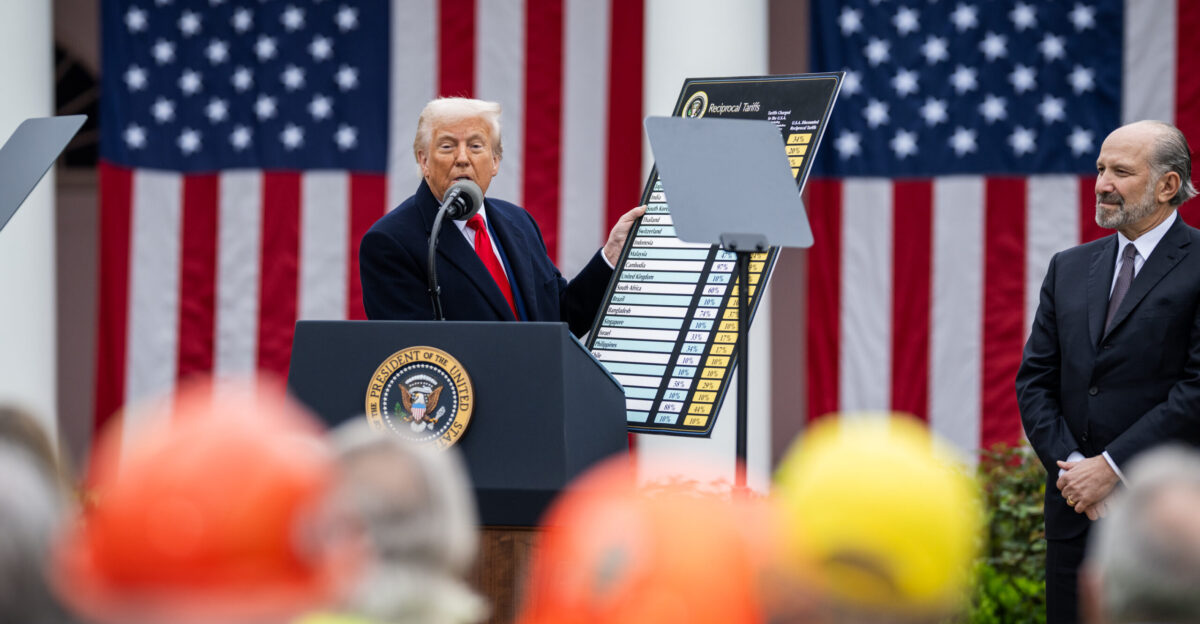
On July 21, 2025, the Mackeys Ferry sawmill in rural North Carolina shut down after the Jones family’s nearly 40-year operation at the location came to an end, leaving 50 workers without jobs.
The closure, triggered by steep tariffs imposed earlier that year, sent shockwaves through the local economy and highlighted the far-reaching consequences of national trade policy on small-town America.
Tariffs and Their Immediate Fallout

The Trump administration’s “Liberation Day” tariffs, enacted on April 2, 2025, aimed to protect U.S. industries by raising taxes on imported goods. For Mackeys Ferry, these measures proved devastating. Tariffs on Canadian softwood lumber soared to 45%, and exports to China became unprofitable as retaliatory tariffs made shipping costs exceed the value of the wood itself.
The mill’s owner, Wilson Jones, described the policy as having “damn near liberated me” from his business. With little time to adapt, the mill was forced to close, instantly eliminating jobs and affecting the region’s economy. Other regional mills began reviewing their operations, with some considering layoffs or reduced shifts.
Nationally, companies like John Deere cited $300 million in tariff-related costs as a reason for cutting over 200 jobs at plants in Illinois and Iowa. The uncertainty surrounding trade policy made businesses hesitant to invest or expand, which in turn rippled through related industries and supply chains.
Rising Costs for Consumers and Businesses

The closure of Mackeys Ferry quickly translated into higher prices and delays for consumers and contractors in eastern North Carolina. With less locally produced lumber available, homebuilders and hardware stores faced rising costs.
Furniture tariffs—30% on upholstered items and 50% on kitchen cabinets and bathroom vanities—drove up prices for living room, kitchen, and dining furniture by 9.5% between August 2024 and August 2025. Some construction projects stalled due to a scarcity or unaffordability of materials.
The effects extended beyond lumber. Domestic steel prices rose significantly due to tariffs; however, steel and aluminum workers in the U.S. and Canada lost jobs as downstream industries reduced their orders.
Builders turned to alternative materials like steel and concrete, but these substitutes were often more expensive or less available, further reshaping construction practices and supply chains.
Trade War and Global Repercussions
The tariff escalation did not go unanswered. China retaliated with its own tariffs, sharply reducing U.S. lumber exports and affecting farmers and manufacturers reliant on global markets. The April 2025 announcements triggered the worst two-day loss in U.S. stock market history, erasing $6.6 trillion in value.
International equity markets lost roughly $10 trillion—about 10% of global GDP—over the following week. The trade war’s reach extended far beyond sawmills, disrupting supply chains and raising prices for consumers worldwide.
Nationally, 42,000 manufacturing jobs were lost after the tariff announcement, with hiring in May 2025 plunging to its weakest rate since 2016. Manufacturing investment was projected to decline by $490 billion by 2029, as businesses delayed capital expenditures amid ongoing uncertainty.
Strain on Workers, Families, and Communities

For the 50 workers at Mackeys Ferry, the shutdown meant immediate hardship. About a dozen accepted positions at a sister mill nearby; the rest faced unemployment, depleted savings, and difficult choices about relocating for work. The closure was a major blow to Washington County, which has experienced other mill closures in recent decades.
The economic strain was felt across the region. Local hardware stores, contractors, and small businesses grappled with higher costs and reduced demand. Suppliers and service providers experienced further job losses as the impact spread through the supply chain.
According to the American Enterprise Institute, the annual cost of tariff protection ranges from $225,000 to $550,000 per job protected, with significant downstream job losses in industries dependent on affordable materials.
Inflation and Political Debate

Tariffs contributed to rising inflation, with the average U.S. household expected to face a $1,200 tax increase in 2025 and $1,600 in 2026, according to the Tax Foundation. Grocery costs jumped 0.6% in August 2025, the largest monthly increase in three years.
Coffee prices soared 20.9% year-over-year, and beef prices rose significantly. Although the Trump administration reversed tariffs on some food commodities, the relief came too late for many families already feeling the squeeze.
The Trump administration defended the tariffs as necessary to protect American jobs, but critics argued they disproportionately hurt rural economies. Lawmakers debated relief measures, but no immediate solutions emerged, underscoring the tension between national policy and local realities.
Uncertain Recovery for Rural America
The closure of Mackeys Ferry is emblematic of the broader challenges facing rural manufacturing communities. With manufacturing hiring at its weakest since 2016 and tens of thousands of jobs lost in 2025, places like Washington County face a significant challenge.
The future will depend on policy changes, technological adaptation, and the resilience of local economies. As the debate over trade policy continues, the real test will be whether decision-makers address the needs of workers and families left vulnerable by economic shifts.